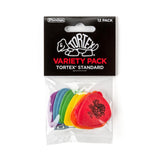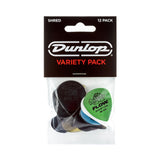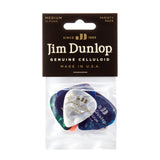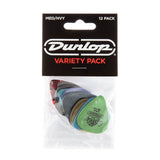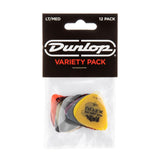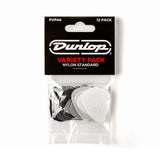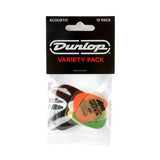The humble guitar capacitor is a tiny device that plays a big role in guitar circuits. Your tone pots just wouldn’t be the same without them! In Part 3 of our Guitar Wiring Guide we’re going to learn more about how capacitors do their work, and how we can use them in various applications in your guitar wiring.
If you're joining us for the first time then we recommend starting with Part 1 - How Guitar Pickups Work.
What are Capacitors?
To use its formal definition, a capacitor is a device that stores electrical energy in an electric field. On the surface this concept is easy enough to understand, but how does it apply to our guitar circuits? Essentially the capacitor acts as a barrier for certain frequencies. High frequencies will pass through unscathed, whilst lower frequencies are blocked. The value of the capacitor, measured in Farads, determines how much of the low signal passes through.
To get more in depth information on Capacitors and more specifically how their values work, check out our Tech Talk article on Capacitors.
Types of Caps
There are varying types of capacitor available for guitar, falling into three main categories. Endless debates have raged on guitar forums about the pros and cons of particular types of caps, but if we’re really honest, the majority of them do pretty much the same job, just in slightly differing ways.
Paper in Oil
Paper-in-Oil (PIO) capacitors were often found in 50s-era Gibson guitars, so are highly sought after by those wanting a true vintage wiring circuit. As per its name, it’s quite literally composed of paper soaked in oil, sealed in thermoplastic. Guitarists began to use it in their wiring circuits as it offered an improvement in both cooling and insulation. Paper-in-Oil capacitors are perfect for those who want to keep their instruments period correct. The famous Black Beauty and Bumblebee capacitors from early Gibsons can often be seen going for crazy amounts of money online, thanks to so many guitarists seeking this holy grail of vintage guitar tone.
Orange Drop
The Orange Drop capacitor is probably the most famous of all and came along in the 60s, providing numerous benefits over Paper-in-Oil. They are more stable, have better resistance to temperature variation, and have a lower moisture absorption characteristic. Gibson often advertise that their guitars have Orange Drop capacitors as a design feature. For guitarists using these in their wiring circuits, Orange Drop caps are absolutely bullet proof, delivering reliably and consistently.
Mylar
Similar in construction to Orange Drop caps, Mylar capacitors are the go to when you need an option that won’t send you over budget. Although not as highly regarded as Orange Drops, they still deliver a performance that’s just as reliable and in a blind test, we highly doubt you’d be able to tell the difference sonically. Many major guitar manufacturers use Mylar caps as a cost saving measure in their guitars, as they provide long-lasting performance for the money.

Use of Caps in Circuits
Now that we understand capacitors and the types of capacitors available, let’s dive into how they’re used in a couple of instances.
Tone Controls
The most common application for capacitors is being used in conjunction with your guitar potentiometer. On it’s own a potentiometer works rather like a light switch dimmer, which is why your volume knob gradually increases or decreases the sound of your guitar. Introduce a capacitor into the circuit however and only a select portion of the signal is removed, resulting in the cutting or increasing of high frequencies when you roll off the tone knob.
Depending on the type of guitar you have and type of wiring, there are several ways the capacitor can be wired into the circuit with varying tonal results. For the most part they are wired between the volume and tone pots but this can vary a lot.
If you want to dive deeper into how capacitors are utilised with tone controls, then check out our Guitar Wiring Diagrams page for numerous examples both vintage and modern.
Treble Bleed Circuit
The treble bleed circuit is a handy little modification that works by using both a resistor and a capacitor to retain high frequencies as you roll off the volume. You may have noticed when turning your guitar’s volume knob down, you lose some of the brilliance and muddy up your tone a little. Due to the relationship between your pickup and potentiometer, when you turn down the pot the resistance is increased. this increased resistance then results in a dip of the high end frequencies.
With a capacitor installed on the volume pot more of the high end bleeds back in as your turn the volume knob down, however this also has another adverse effect. When you have just a capacitor installed, it also cuts off some of the bass tones as the volume is rolled down. To combat this, you can add a resistor into the circuit alongside the capacitor, resulting in a preservation of your original tone as you roll off the volume.
It sounds initially complex but once you get your head around it, it’s actually relatively simple to do! If you’re the sort of player who likes to control their gain via their volume knob, then this is a must have a modification for your guitar.
If you want to learn more about the applications of resistors in guitar circuits we have a comprehensive article on that here.
In Conclusion
Hopefully this article has helped you to understand more about this crucial component of guitar wiring. It might seem at first to be a dense subject, but we can assure you with repeat reading of this article and others across the series, alongside your own experimentation, you will find that wiring guitar circuits is much simpler than you’d initially expect!
Learn More
Our Tech Talk article on Guitar Capacitors serves as a great knowledge booster with this article.
Check out how Resistors in Guitar Circuits work for another interesting topic.
Know more about the types of Guitar Potentiometer with this informative article.

















